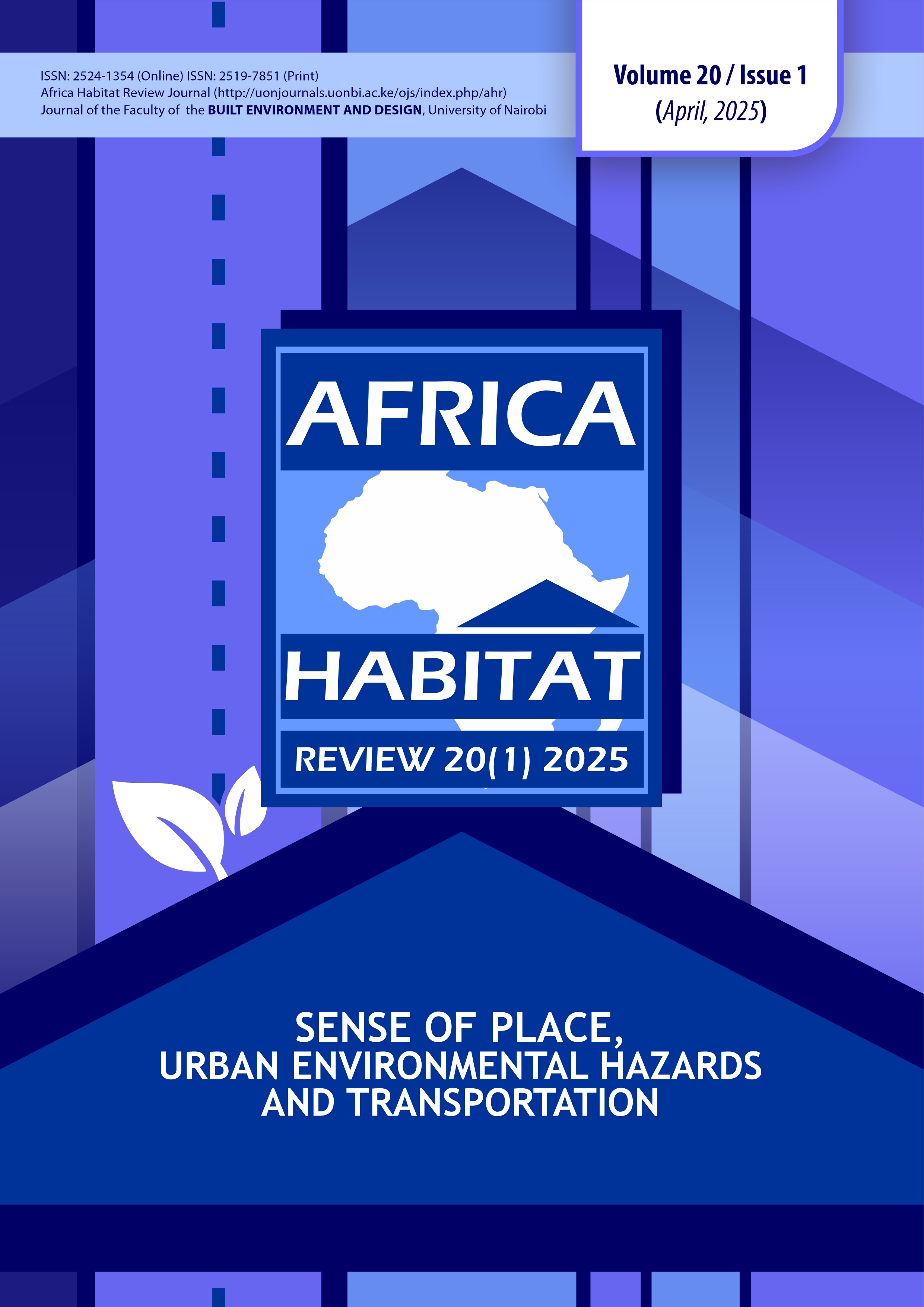Anthropogenic Activities and their Implications on the Physical Extents and Ecological Conditions of Riparian Zones in Nairobi River Basin, Nairobi City County: A Case of Ngong, Mathare and Nairobi Rivers
Abstract
Anthropogenic activities have impacted the physical extent and ecological conditions of riparian zones in most urban areas of developing countries. The study investigates the implications of anthropogenic activities on the physical extent and ecological conditions of riparian zones in Nairobi City County. Specifically, the study examines the effects of human land-use activities, and it identifies the drivers of anthropogenic activities on the physical extent and ecological conditions of riparian zones in Nairobi City County. Finally, it proposes strategies that promote the appropriate physical extent and ecological conditions of riparian zones in urban areas. Focusing on the Nairobi, Ngong, and Mathare rivers, secondary data were collected from peer-reviewed journals, government records, and policies and laws on riparian zones. Meanwhile, primary data were collected and analyzed using GIS, observation, interviews, and key informant interviews with, among others, staff from the National Construction Authority. The Kobo Collect tool was used to administer questionnaires digitally and offered spatial locations from its GPS. The camera enabled photography. Findings show that the effects of human activities are the narrowing of riparian zones due to encroachments and the dumping of waste. The problem is prevalent in both formal and informal land uses. The drivers of encroachment and degradation of riparian zones include, among others, weak enforcement of policies and laws, poor demarcation of the zones, and poor mapping and monitoring of the zones. The study concludes that anthropogenic activities, including the construction of structures and the disposal of solid waste and wastewater, have harmed the physical extent and ecological quality of the riparian zones in the Nairobi River Basin. The study recommends demarcation of riparian zones, GIS mapping and monitoring using GIS spatial analyst tools. Utilization of Kobo Collect to gather data on hotspots and the periodic enforcement of policies and laws.


